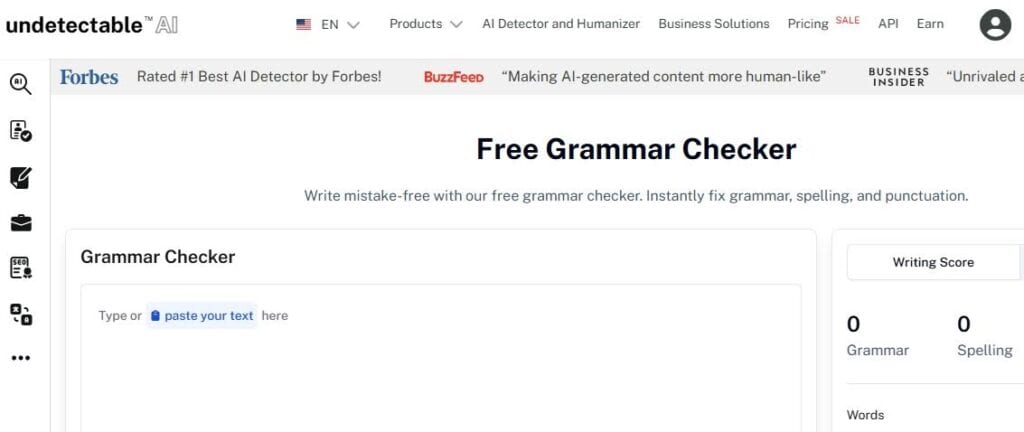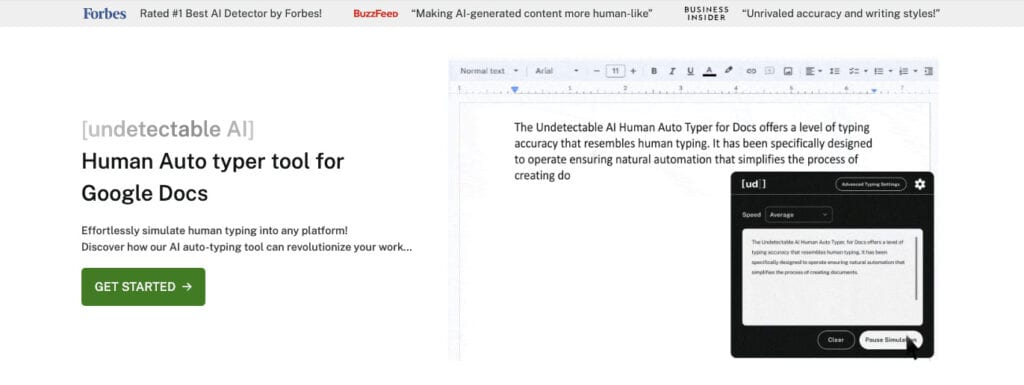What is a conjunctive adverb? How can it help to make your writing better?
Don’t go anywhere; this article will teach you how you can apply conjunctive adverbs correctly.
It’s one of the most essential figures of speech that gives your writing flow and makes it more understandable and professional.
Key Takeaways
- Conjunctive adverbs combine two separate sentences or clauses.
- They represent relations such as contrast, cause and effect, or time.
- They must be placed with proper punctuation, such as a semicolon or comma.
- Conjunctive adverbs may be placed at the beginning, middle or end of a sentence.
- They help to make your writing flow easily and aid comprehension.
What Is a Conjunctive Adverb?
A conjunctive adverb is a term or phrase that joins two independent sentences and also shows the relation between two sentences.
For instance, you may say
- He decided to go for a walk; however, it started to rain.
- He asked me to resume by 1pm; meanwhile, he showed up by 3pm.
How They Differ from Coordinating Conjunctions
Conjunctive adverbs are usually compared with coordinating conjunctions like “and” or “but”. They’re not the same, but they’re related.


Never Worry About AI Detecting Your Texts Again. Undetectable AI Can Help You:
- Make your AI assisted writing appear human-like.
- Bypass all major AI detection tools with just one click.
- Use AI safely and confidently in school and work.
Coordinating conjunctions can be used to join two independent clauses and lay equal emphasis on both. It may be expressed as:
- Peter practiced the flute alone, and now he is learning to play the piano.
- I was tired, but I completed my tasks.
Alternatively, conjunctive adverbs attach two independent clauses and indicate the relationship between them.
You can also show the relationship between two individual clauses by making statements like
- Claudia loves to run every morning; however, she never takes the same route twice.
- I was tired; nevertheless, I completed my tasks.
In this example, “however,” the link between the two clauses also shows how Claudia performs her morning run.
The punctuation style varies when using coordinating conjunctions. The conjunctive adverb follows the semicolon and before the comma to link two sentences.
List of Common Conjunctive Adverbs

Below is a list of common conjunctive adverbs. Let’s get into it.
Addition
Words like “moreover” or “furthermore” can be used to help add extra information or expand on the initial idea.
These conjunctive adverbs come in handy when you are trying to build your case in point or listing out advantages of an object
The use of moreover puts more emphasis on the point that substantiates the statement given before.
“Furthermore,” serves to provide additional information to the already proposed idea. While the phrase “In addition” has a bit of difference in that it assists in adding another point to the sentence.
For Example:
- She is a great student; furthermore, she volunteers at the local library.
- It is a cheap restaurant; in addition, the service is great.
- The new policy will save money; moreover, it will improve growth.
Contrast
Conjunctive adverbs may be used as a contrast illustrating a different or opposing idea to the first point made.
Examples include “However”, “Nevertheless”, and “On the Other Hand.” They help to show a different concept other than what has been mentioned.
However, they may result in varied results as per the way you frame your sentences.
“However” usually shows that there is an unexpected twist. But “Nevertheless” is typically used to indicate that the subject did not give up even in the face of a hiccup.
By using “on the other hand,” you can introduce an alternative point of view or a counterargument.
Examples:
- The day has been sunny; however, it rained all evening.
- It rained during the football match; nevertheless, the players finished the match.
- City life is super fun; on the other hand, it can be very loud.
The above are the best examples of showing what’s a conjunctive adverb in contrast or balance between two sides of an argument.
Cause and Effect
More examples of conjunctive adverbs include, Therefore, Thus, Consequently.
You can use these to relate an action or situation to a result or consequence. ‘Therefore’ shows that what comes next is a logical conclusion.
Meanwhile, “Thus” is similar to ‘therefore’, but is often used more in formal or scholarly publications. “Consequently” underlines that something occurred as a direct result.
Examples:
- The food got burnt; therefore, we would starve.
- The traffic was heavy; thus, the workers were late for the meeting.
- He never prepared; consequently, he failed the exam.
Overall, these clear your cause-and-effect statements and make them look professional.
Sequence and Time
Another way to use conjunctive adverbs in a sentence is to explain sequence and time.
“Then”, “Meanwhile”, and “Next” are adverbs that show when events happen in a sequence or what’s happening at the same time.
When you use “Then”, it shows what is about to happen next in a sequence. If you’re using “Meanwhile”, you want to show that multiple events are happening at once.
Examples:
- She finished her schoolwork, then she went to the mixer.
- Sarah cooked the roast; meanwhile, Mark set the table.
These adverbs can be used in instructions, guide notes or descriptive writings to explain steps in order.
Suppose you’re still interested in learning how to distinguish conjunctive adverbs, and you’re wondering is although a conjunctive adverb?
Use the Undetectable Ask AI to clarify and distinguish conjunctive adverbs and what words will fit a sentence’s purpose.

How to Use Conjunctive Adverbs Correctly
To deal with conjunctive adverbs, you need to be mindful of the word placement in the sentence and the adverb punctuation.
The following are examples of placement and punctuation rules.
Placement in a Sentence
You can place conjunctive adverbs at the beginning of a sentence, or in the middle of a sentence or clause.
The decision is based on whatever concept you would prefer to highlight or how you would like to flow your thoughts.
The most common placement is the middle or start of the sentence.
Another thing to pay attention to is how to always match the punctuation to the placement of the conjunctive adverb.
This simply means using a comma when it’s at the beginning of a clause or where it follows a semicolon. Also, you can put commas around if it interrupts the clause.
- The team was tired; however, they kept practicing.
Punctuation Rules (Comma or Semicolon?)
Most people often wonder when to properly use the comma and semicolon when placing conjunctive adverbs in a sentence.
The big question is whether you are connecting separate clauses or changing within the sentence.
The three formats are as follows:
- Breaking a Clause with a Conjunction Verb: In this type of style, a comma is required to surround the conjunctive adverb when it comes in the middle part of the sentence. You can structure it as
- No, but she requires more time, she will.
- Independent clause + Conjunctive Adverb + Independent clause: If you’re using this style, put a semicolon before the conjunctive adverb and a comma after it.
- The rain was falling heavily; however, the players remained concentrated on the match.
- Coordinating Conjunction + Conjunctive Adverb: Sometimes, you may write a sentence with both a coordinating conjunction like ‘and’, ‘so’ or ‘but’ before the conjunctive adverb. For instance
- She was late; therefore, he had to go by himself.
Joining Independent Clauses
Connecting two independent clauses is one of the main uses of conjunctive adverbs.
This assists in demonstrating expressive associations in meaning and associations of ideas. Words such as “Meanwhile” and “Next” are used to depict sequence and time.
Alternatively, conjunctive adverbs such as “Consequently”, “Therefore” assist in depicting cause and effect.
- He lied to me; meanwhile, I knew all along
- I started on the agreement, next, we went forward with the plan
In case you are still having trouble with where to put the punctuation of your conjunctive adverb, you can copy the sentence and paste it in the Undetectable AI Grammar Checker to see where you seem to have wrongly placed them.

Conjunctive Adverbs vs Other Connectors
Conjunctive adverbs are easily confused with other connectors, such as coordinating or even subordinating conjunctions.
Each of the devices, however, has distinct differences.
- Coordinating Conjunctions: These are used to connect two concepts and equal stress on either is emphasized without the use of special punctuation.
- He felt like resting, but he continued reading.
The expression of the word “but” above places significance on the first and second clauses.
Other forms of coordinating conjunctions include: and, or, so.
- Subordinating Conjunctions: Are yet another connector commonly related to conjunctive adverbs. This connector associates the main point to some other idea that relies on the former. Examples include: because, although, and while.
- He kept running although he was tired.
Sentence Structure Comparisons
Look at the difference in punctuation and at the slightly different tone of formality created in all the sentences provided below when using the conjunctive adverb.
| Connector | Example |
| Coordinating conjunction | He misplaced his keys, so he went home. |
| Subordinating conjunction | Because he lost his keys, he went home |
| Conjunctive adverb | He lost his keys; therefore, he went back home. |
Examples of Conjunctive Adverbs in Action
Are you still asking what’s conjunctive adverb? Here are five additional examples that can make you visualize them in simple sentences:
- “There was a lot of rain; however, they decided to take a hike.” There’s a contrast between the two clauses.
- “She didn’t study; consequently, she failed the test.” This example shows how a conjunctive adverb may be used to explain cause and effect.
- “I want to save money; therefore, I will cook at home.” The conjunctive adverb indicates the main idea in the first clause and the outcome in the next clause.
- He packed his bags; then, he called a taxi. This example lets you see how one point shifts to the next.
- The show was cancelled; nevertheless, the fans stayed to cheer. Another example of a contrastive conjunctive adverb.
These are all after sentences that contain two full ideas with a conjunctive adverb in between and proper punctuation.
Common Mistakes and How to Fix Them
Here are some mistakes people make with conjunctive adverbs, and you’ll also learn how to fix them:
- Using only a comma. The correct format applies both semicolon and comma
- Incorrect: I was hungry, therefore I ate.
- Correct: I was hungry; therefore, I ate.
- Omitting the comma following the adverb
- Incorrect: I was hungry; however I waited.
- Correct: I was hungry; however, I waited.
- Using the wrong adverb for the meaning. It’s often employed to give more information, but does not apply when explaining cause and effect.
- Incorrect: It was late; moreover, we went home.
- Correct: It was late; therefore, we went home.
It’s important to cross-check what is conjunctive adverb?
Make sure that every single clause is an independent clause and can stand by itself. You should also pay attention to the point at which you are applying a semicolon, period or comma.
If you’re working on mastering punctuation and sentence structure, our Undetectable AI’s Human Auto Typer can make the process much easier.

It types out your text naturally in real time, helping you see how your sentences flow and where your punctuation should land.
Instead of copying and pasting examples or manually typing them line by line, the Human Auto Typer recreates the rhythm of human writing for you.
It’s especially useful for practicing sentence patterns like conjunctive adverbs and keeping your writing authentic while avoiding formatting or detection issues.
Detect AI patterns and humanize your writing in seconds—use the widget below.
FAQs About Conjunctive Adverbs
Can You Start a Sentence with a Conjunctive Adverb?
Yes, you can start a sentence with a conjunctive adverb. It is a good way to link a fresh sentence to the previous one or connect two different ideas.
Should You Always Use a Semicolon Before One?
No, insert a semicolon where you’re joining two independent sentences. It is a way to show that they’re both independent ideas, but can connect. The conjunctive adverb helps to clarify the type of relationship between them.
Are Conjunctive Adverbs Optional?
Absolutely. You can decide when to use conjunctive adverbs in your writing to make your writing clearer and more professional.
Do They Affect Subject-Verb Agreement?
No, conjunctive adverbs don’t affect your grammar. They only show how one independent clause can relate to another independent idea.
Final Thoughts
Understanding the question ‘What is a conjunctive adverb?’ is a simple yet powerful way to elevate your writing.
We’ve outlined simple rules to help your writing be clearer, structured and professional.
When using conjunctive adverbs, it is most important to use proper punctuation and place commas appropriately after using the adverb.
You should also ensure your adverb fits the sentence structure for additional clarity.
To easily evaluate your writing, we recommend using the Undetectable AI Grammar Checker and Ask AI tool to catch mistakes.
Make your writing sharper—try Undetectable AI today.
